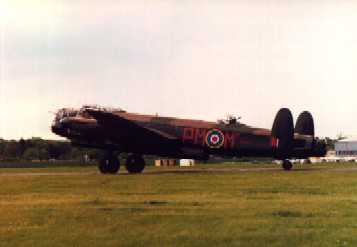World war two 1939-1945
The early war years
The second world war saw far reaching changes at Farnborough.
The first tarmac runways were installed and the airfield reached bursting point,with around 150
aircraft undergoing test by the wars end.It also saw a gradual shift away from experiments with aircraft,to
research into electronics and avionics.The first year of the war,the so called phony war,saw little change from peace time.
Only the increased work load and camouflaging of the airfield gave things away.
The first real introduction to the war came in August 1940,at the height of the Battle of Britian.
A small number of Luftwaffre bombers attacked the airfield causing minor damage to the airfield.Many of the bombs fell
in the adjacent residential roads near the present collage.Although three members of the home guard were killed by a direct hit #
on their bunker.These being the first Home Guard deaths.The attack resulted in some of the departments
being dispersed in the local area.Also the establishment of a 'Battle Flight' comprised
of Spitfires and Hurricanes used for testing.
Obviously at this time the British aircraft industry was working at full capacity.New prototypes arrived almost weekly for
testing,many untried.The toll on test pilots was high at this time.There being no formal training for test pilots until 1944.
Also many captured enemy aircraft,as well as aircraft purchased from abroad were under test.
The giant leap
Jet aircraft had been under development in Britian and Germany,despite official sceptisism,from the late 30's.
The first British jet,the Whittle powered Gloster E25/39,first flew from RAF Cranwell in 1941.Shortly after it arrived at Farnborough under great secrecy.
The first practical jet was the Gloster Meteor of 1943.This saw very limited war service intercepting V1 flying bombs.
The Germans had a great lead in the operational use jets,and the arrival of captured jets gave the british aircraft industry a great lead in this
technology.The main obstacle was the breaking of the sound 'barrier'.Research was carried out in Spitfires stripped of armamant and with special engines.
One reached just over 600mph,the fastest ever speed by a piston engined aircraft,in a dive from 40,000 feet.Frequently the aircraft was destroyed by these tests.
Other work involved the introduction of catapults to aircraft carriers,several being tested at Farnborough.
The first practical helicopters made their first appearance in 1944.
Knowing the enemy
Some of the most interesting,and complex work undertaken during the war years
was the testing of captured aircraft.The first arrivals were shot down and were pieced tougher,so to flying condition.As the war progressed into
its final months German aerodromes became captured along with their aircraft.Several examples of each of type were despatched to Farnborough for test.
These ranged from docile trainers,to the latest jet bombers capable of 600mph.Due to the lack of spares and lack of flying experience most were not flown.
In November 1945 a exhibition of these aircraft took place for VIP's,and one one day RAE employees familys.Which at that time covered most of the local population.
On the last day a captured Dornier 335 crashed into nearby Cove school,killing the pilot,but nobody on the ground.After this flying of all enemy aircraft was forbidden.

The Spitfire was used for reaserch through the war

The Mesersmitt 109,used throught the was the Luftwaffre,and commonly seen at Farnbrborough in RAF roundals

Lancasters were used espically for engine flying testbeds throughout the was and into the 1950's
return to index


